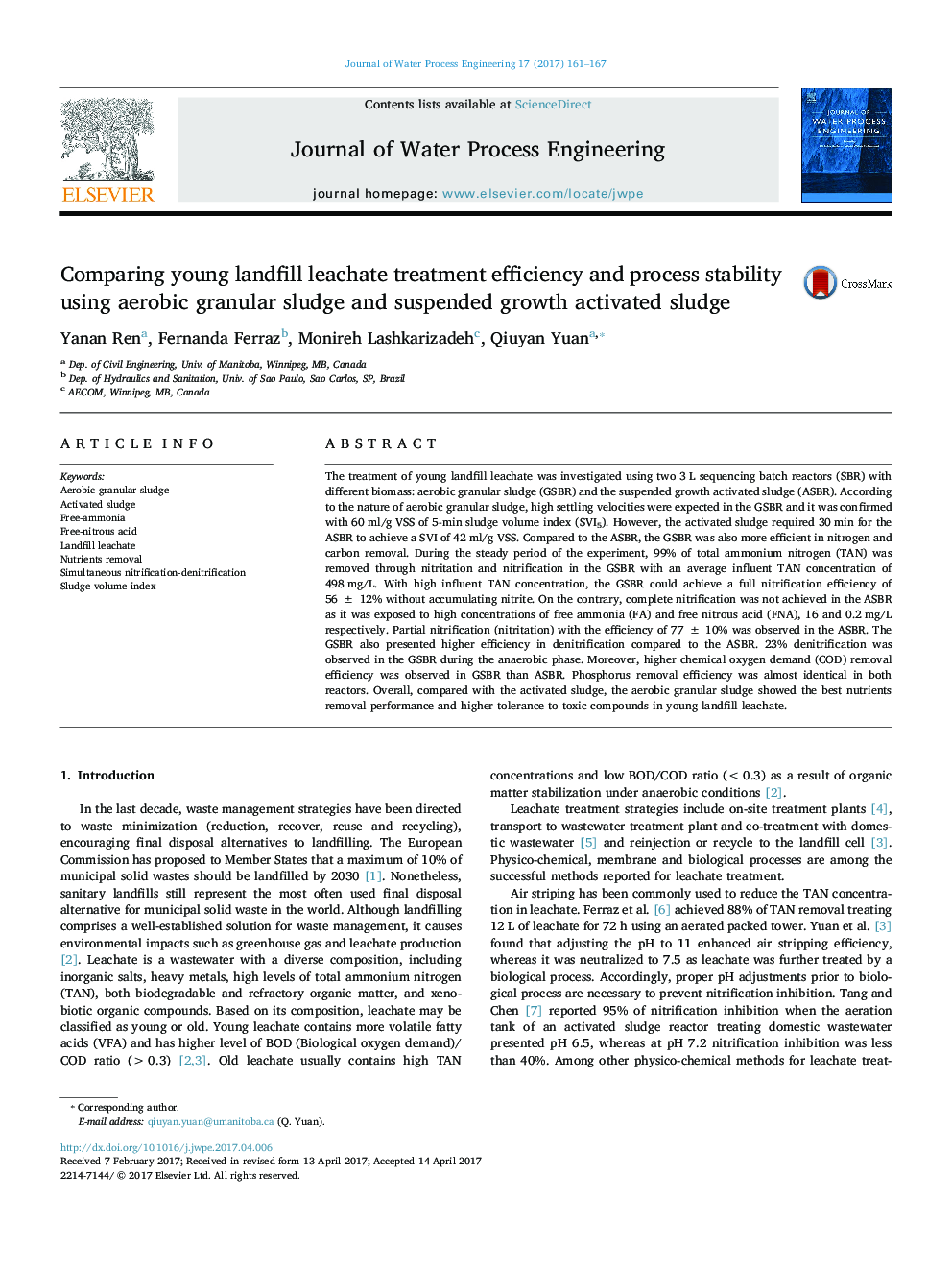| Article ID | Journal | Published Year | Pages | File Type |
|---|---|---|---|---|
| 4909921 | Journal of Water Process Engineering | 2017 | 7 Pages |
Abstract
The treatment of young landfill leachate was investigated using two 3 L sequencing batch reactors (SBR) with different biomass: aerobic granular sludge (GSBR) and the suspended growth activated sludge (ASBR). According to the nature of aerobic granular sludge, high settling velocities were expected in the GSBR and it was confirmed with 60 ml/g VSS of 5-min sludge volume index (SVI5). However, the activated sludge required 30 min for the ASBR to achieve a SVI of 42 ml/g VSS. Compared to the ASBR, the GSBR was also more efficient in nitrogen and carbon removal. During the steady period of the experiment, 99% of total ammonium nitrogen (TAN) was removed through nitritation and nitrification in the GSBR with an average influent TAN concentration of 498 mg/L. With high influent TAN concentration, the GSBR could achieve a full nitrification efficiency of 56 ± 12% without accumulating nitrite. On the contrary, complete nitrification was not achieved in the ASBR as it was exposed to high concentrations of free ammonia (FA) and free nitrous acid (FNA), 16 and 0.2 mg/L respectively. Partial nitrification (nitritation) with the efficiency of 77 ± 10% was observed in the ASBR. The GSBR also presented higher efficiency in denitrification compared to the ASBR. 23% denitrification was observed in the GSBR during the anaerobic phase. Moreover, higher chemical oxygen demand (COD) removal efficiency was observed in GSBR than ASBR. Phosphorus removal efficiency was almost identical in both reactors. Overall, compared with the activated sludge, the aerobic granular sludge showed the best nutrients removal performance and higher tolerance to toxic compounds in young landfill leachate.
Keywords
Related Topics
Physical Sciences and Engineering
Chemical Engineering
Chemical Engineering (General)
Authors
Yanan Ren, Fernanda Ferraz, Monireh Lashkarizadeh, Qiuyan Yuan,
